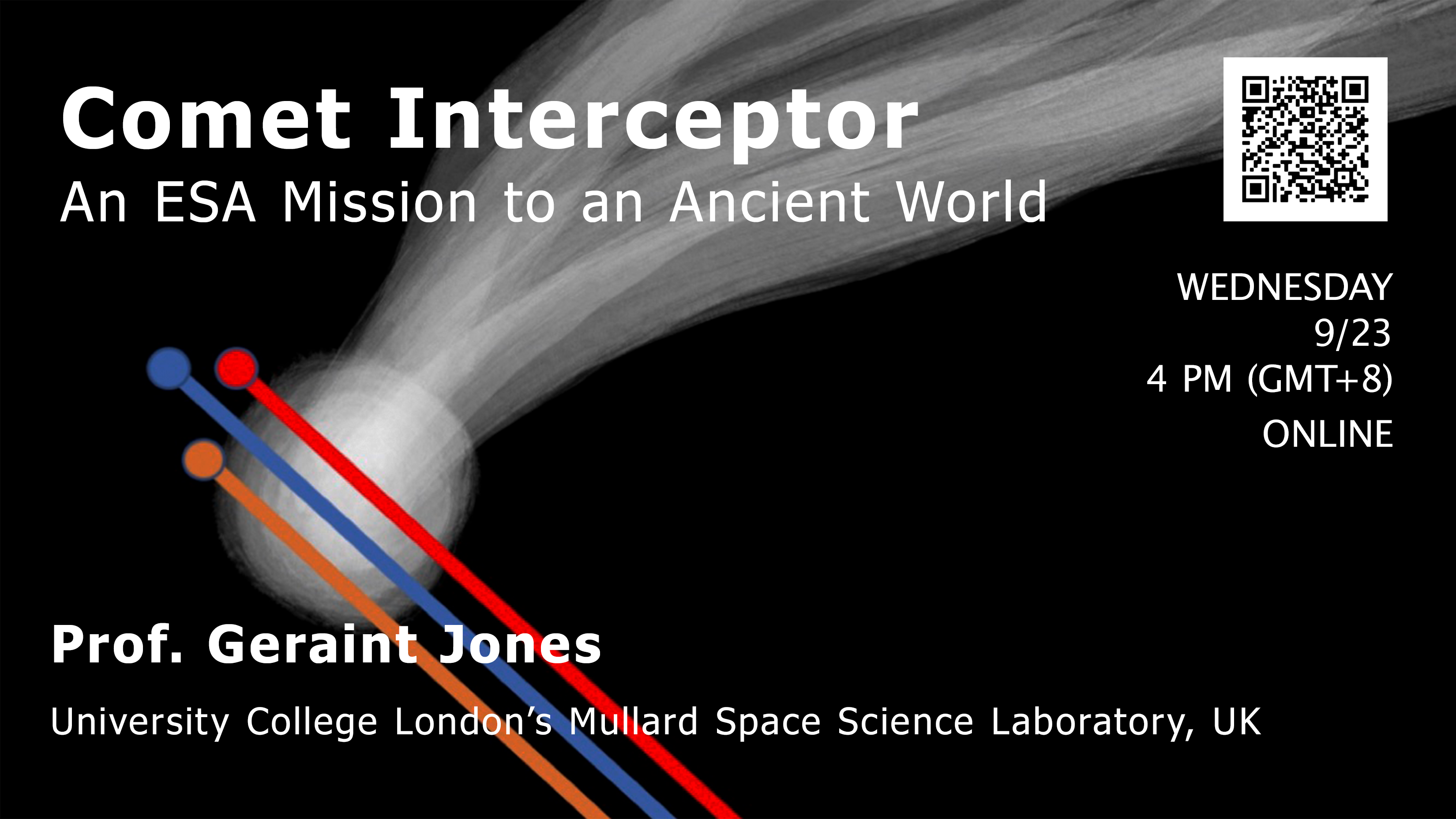Credits: cometinterceptor.space
Speaker: Prof. Geraint Jones
Date: Wednesday, September 23, 2020
Time: 4 PM (GMT+8)
Register here
In Summer 2019, a multi-spacecraft project - Comet Interceptor - was selected by the European Space Agency as its next planetary mission, and the first in its new class of Fast (F) projects. The mission’s primary science goal is to characterise, for the first time, a long-period comet, preferably dynamically-new, or an interstellar object. An encounter with a comet approaching the Sun for the first time will provide valuable data to complement that from all previous comet missions, which have by necessity studied short-period comets that have evolved during their time orbiting near the Sun from their original condition. Planned measurements of the target include its surface composition, shape, and structure, its dust environment, and the composition of the gas coma. A unique, multi-point ‘snapshot’ measurement of the comet- solar wind interaction region is to be obtained, complementing single spacecraft observations made at other comets.
The spacecraft will be delivered to Sun-Earth Lagrange Point L2 with the ESA Ariel mission in 2028, and would by default be placed in a holding location suitable for later injection onto an interplanetary trajectory to intersect the path of its target. A suitable new comet would be searched for prior to launch, and after launch if necessary, with a short period comet serving as a backup destination. With the advent of powerful facilities such as the Vera Rubin Observatory (LSST), the prospects of finding a suitable dynamically new comet nearing the Sun for the first time are very promising. The possibility may exist for the spacecraft to encounter an interstellar object if one is found on a suitable trajectory. We shall describe the science drivers, planned observations, and the mission’s instrument complement, to be provided by consortia based in Europe and Japan.
Credits: cometinterceptor.space
About Prof. Geraint Jones
Prof. Geraint Jones is head of the Planetary Science Group at University College London’s Mullard Space Science Laboratory. Jones studied for his PhD in cometary science at that institution, and subsequently worked at Imperial College London, NASA’s Jet Propulsion Laboratory, and the Max Planck Institute for Solar System Research, before returning to MSSL in 2007. His research has primarily involved the solar wind and its interaction with small bodies, and interactions between giant planets’ magnetospheres and their moons and rings. He is, or has been, a member of the Ulysses, Cassini-Huygens, Solar Orbiter, ExoMars and JUICE mission teams. He was the lead proposer for Comet Interceptor, and is now that ESA mission’s Principal Investigator.
